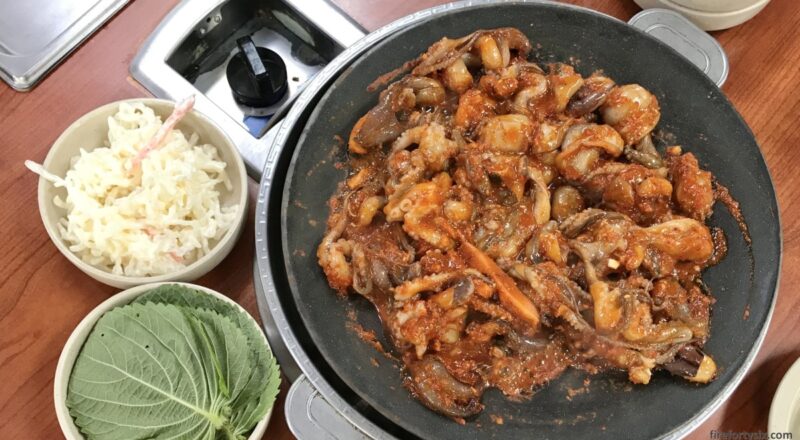Somewhere in the Yongdu-dong neighbourhood, within the Dongdaemun-gu district, a brass octopus stands at attention, solemnly saluting all who walk past.

Eternally vigilant, it guards the entrance to Jjukkumi Street, where countless comrades have fallen. They continue to fall, day after day, month after month, without any respite in sight.
Wearing a stoic expression, it knows that it can do nothing to prevent the on-going tragedy. All it can do is bear witness, and silently mourn the senseless sacrifice.
One of the main perpetrators is Najeongsun Halmae Jjukkumi (나정순 할매 쭈꾸미) (Naver Maps, Google Maps). Its façade and interior bathed in red from decades of intense conflict.
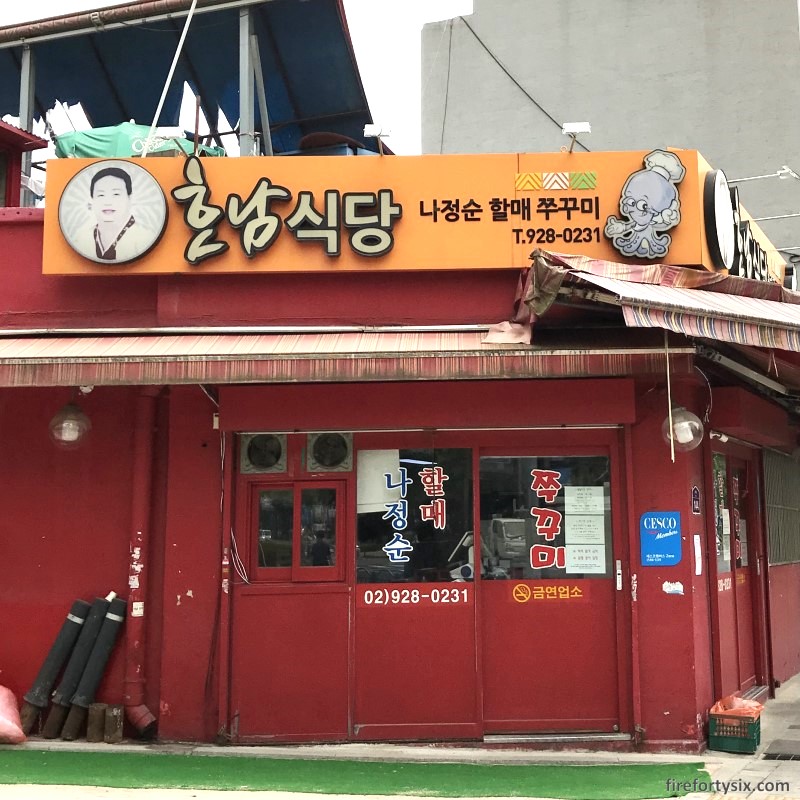
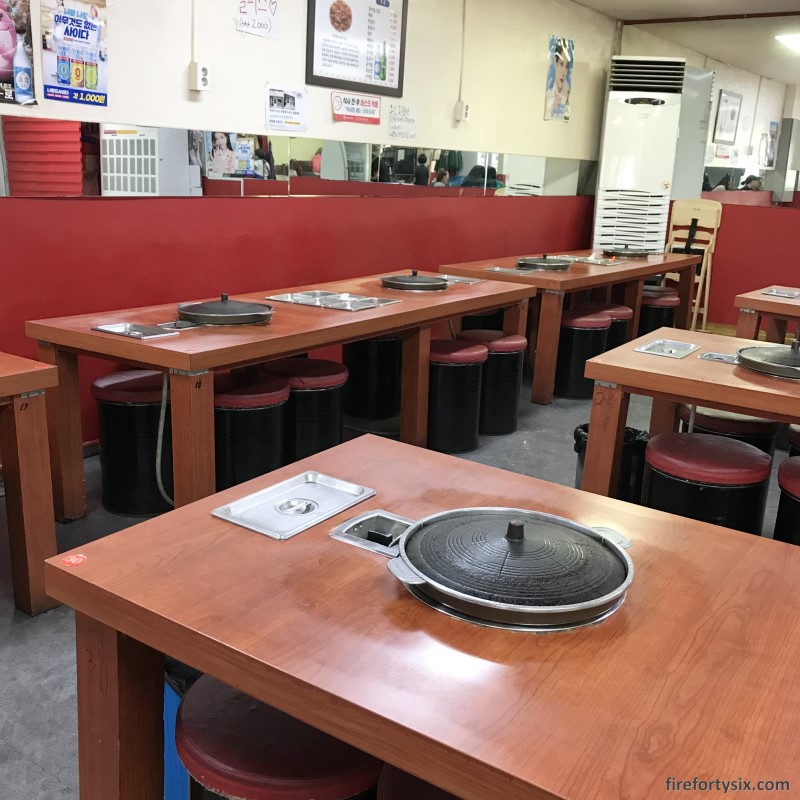
We braved the Seoul underground subway system, exited Line 1 at Jegidong station and proceeded to silently infiltrate the frontline.
Despite our abundance of caution, we were immediately spotted.
Before we even had a chance to react, a battle-hardened ajumma unnie escorted us to a table, firmly instructed us to sit and pointed to a menu displayed on the wall.


Without skipping a beat, she upended a large bowl of jjukkumi (쭈꾸미) onto a heavy metal plate and lit the flame underneath.
There must have been dozens of the webfoot octopus, all lying motionless in a sea of red gochujang.
It could have been worse. They could have been dismembered alive like san nakji (산낙지), their long-armed close cousins, and served wriggling helplessly on a plate.
Still, it was cold comfort, as they awaited their inevitable fiery end.

To overcome the shock of witnessing such a gruesome sight, we attempted to soothe our nerves and drown ourselves in makgeolli.
Not the fancy brews that we had elsewhere, but the ubiquitous Jangsu (장수) with its instantly recognisable green label.
As we gulped down the fermented rice wine, unnie returned with doenjang jjigae and a banchan of creamy and crunchy mayo seaweed.
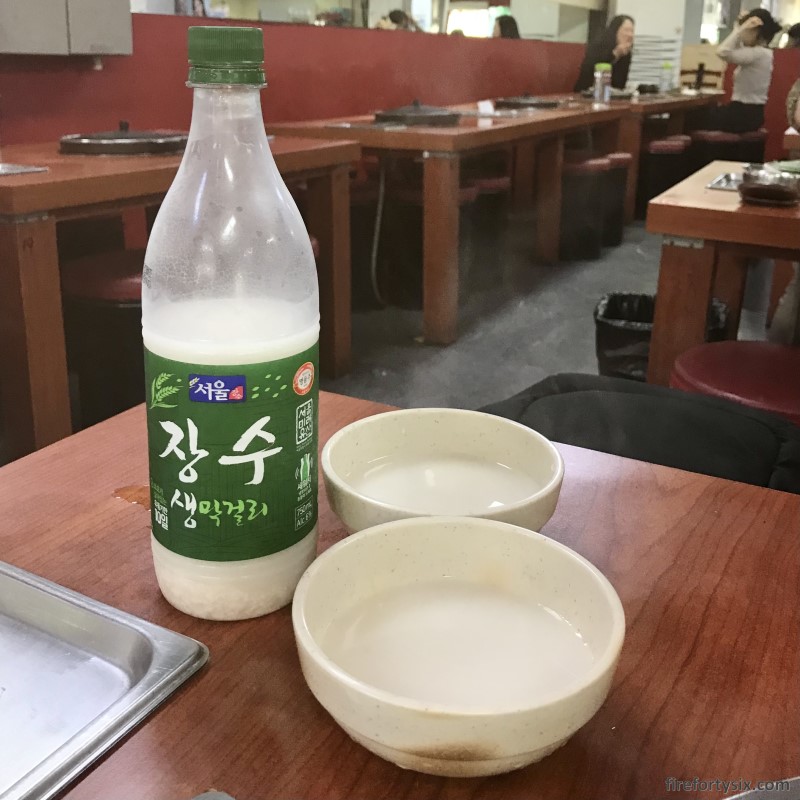
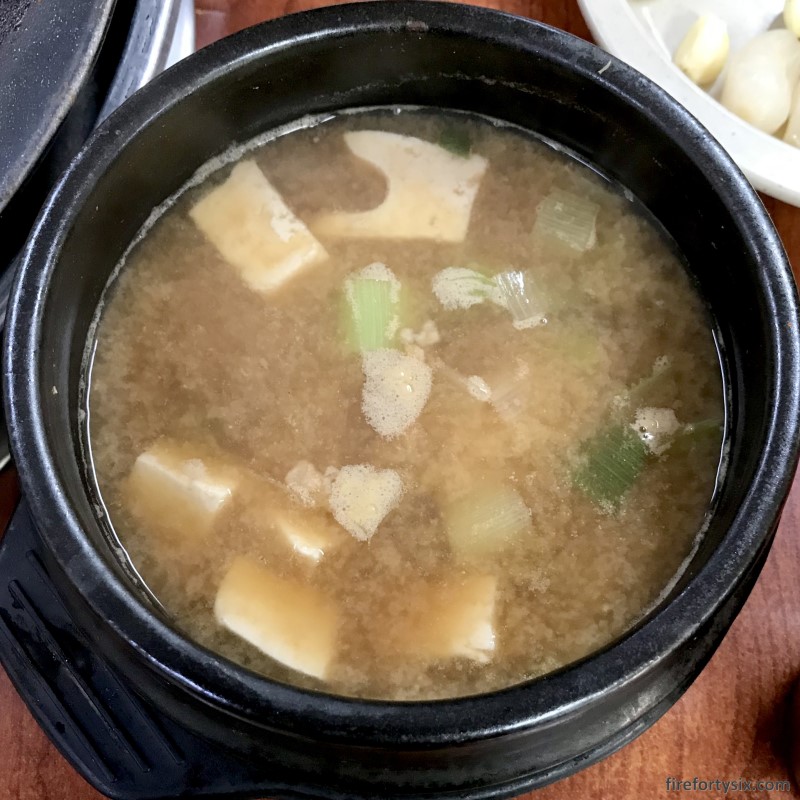

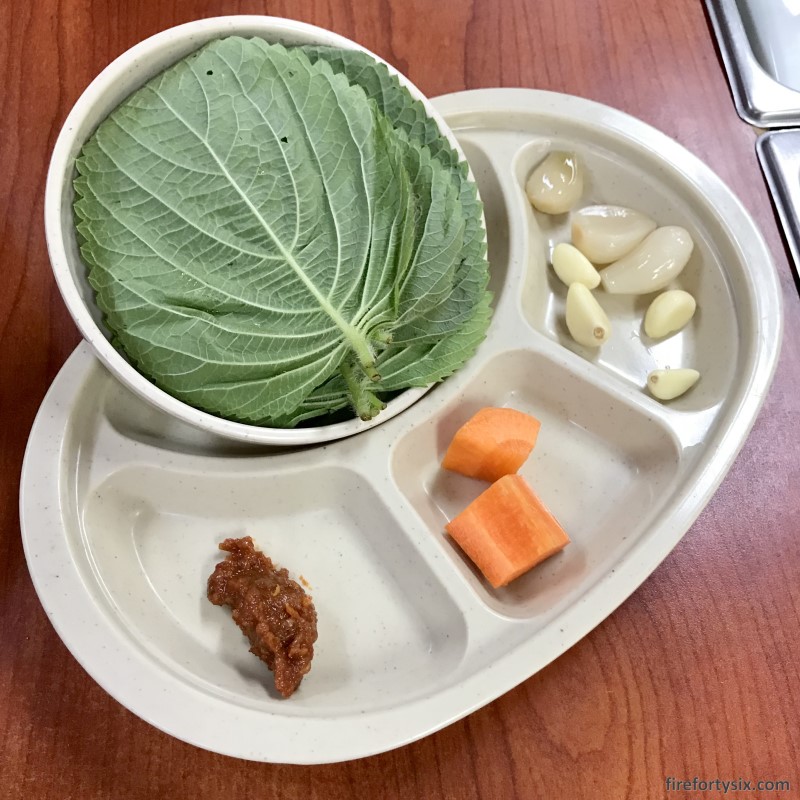
The metal plate had started to heat up, reducing down the sauce and charring the jjukkumi with audible sizzles.
It was a mesmerising sight, accentuated by the enticing scent that wafted up in waves as the concoction bubbled away.
We managed to tear our eyes away long enough to read a framed poster hanging on the wall. It was yellowed from age, and what was written provided an insight into the root cause of the conflict:
“Octopus is rich in taurine, which helps the liver detoxify, is effective in recovering from fatigue, and is good for preventing diabetes by promoting insulin secretion.”


Human beings have stood at the apex of the food chain for millennia, and this was yet another example of how another species has been subjugated for the benefit of our own health.
The sauce had boiled down to the consistency of thick maple syrup, coating each piece of octopus with a glistening sheen.
Despite all our misgivings, we simply couldn’t resist the “unique taste of the chubby and chewy jjukkumi”.

It was spicy, very spicy, second only to the searing kimchi at Myeongdong Kyoja. But there was an underlying umami-ness that complemented the heat, a complex and earthy flavour that compelled us to keep eating.
When the heat got a bit too overwhelming, we wrapped the dismembered pieces in kkaennip to create one-bite packages. The herbal and minty leaves helped reset our palates, and enabled us to continue.
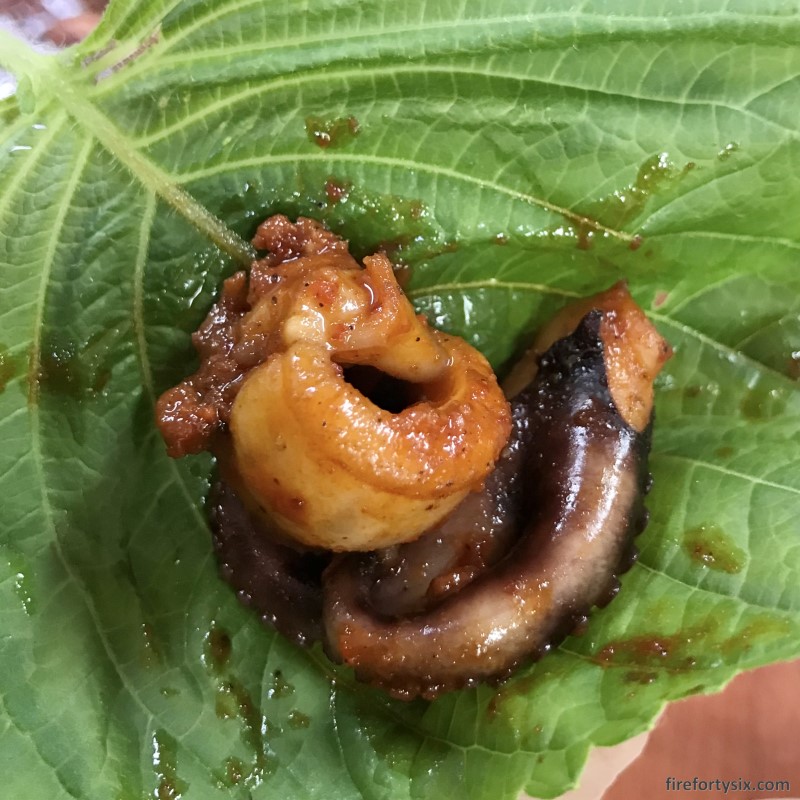
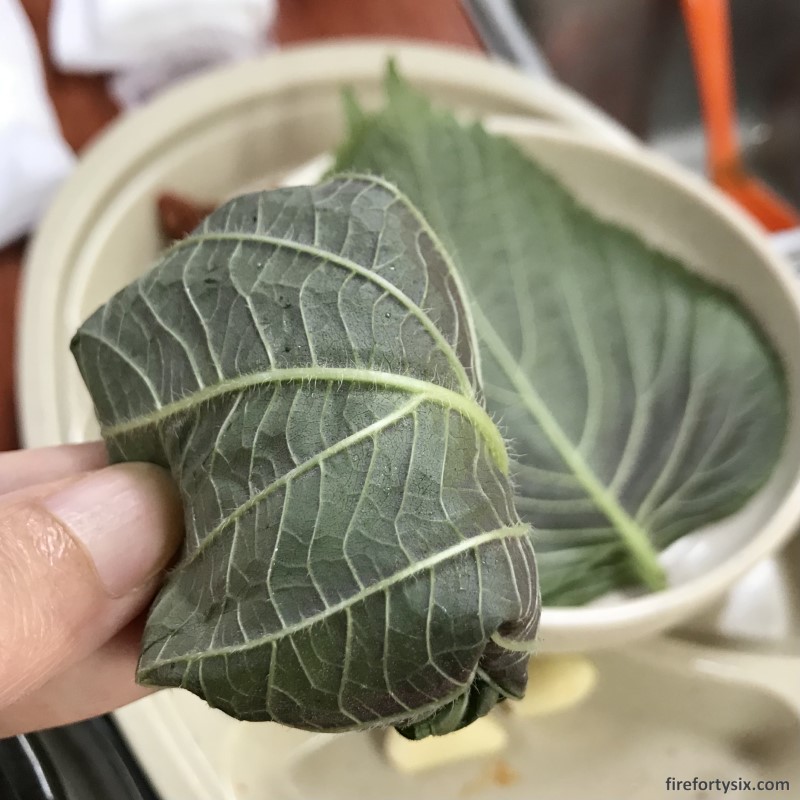
Before we finished everything, unnie came back and asked if we wanted to make bokkeumbap (볶음밥) using the leftover sauce.
It was a rhetorical question, of course, as there was only one possible answer. She rapidly and methodically transformed white rice and dried seaweed into a delicious and crispy pancake.
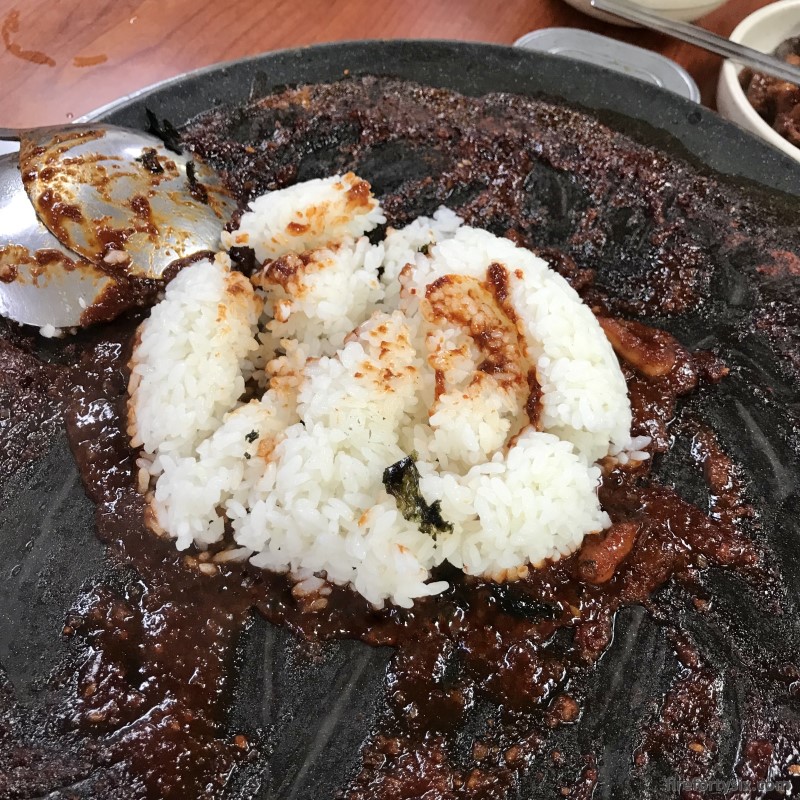

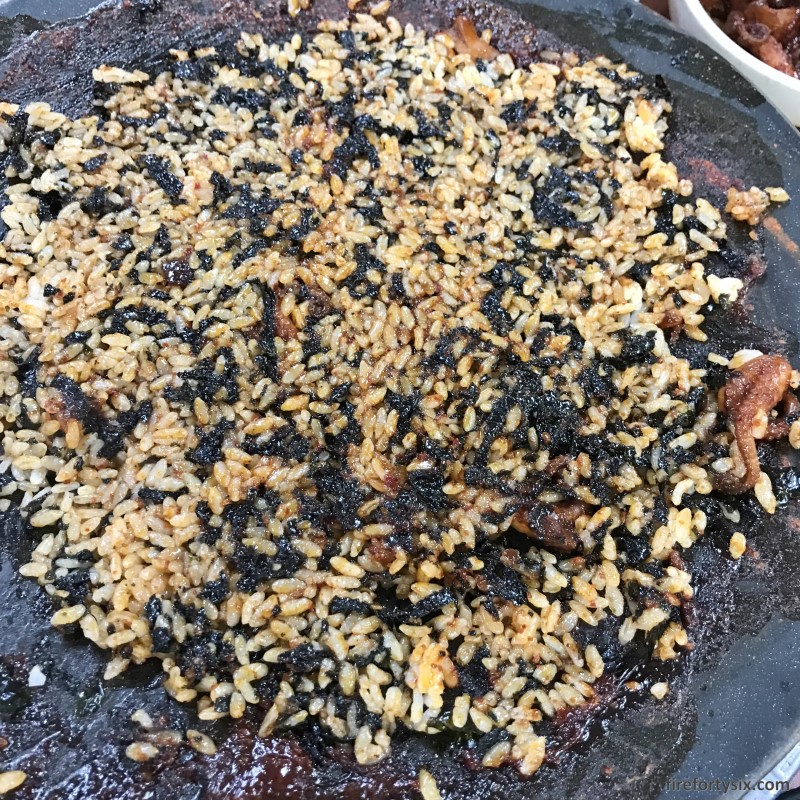
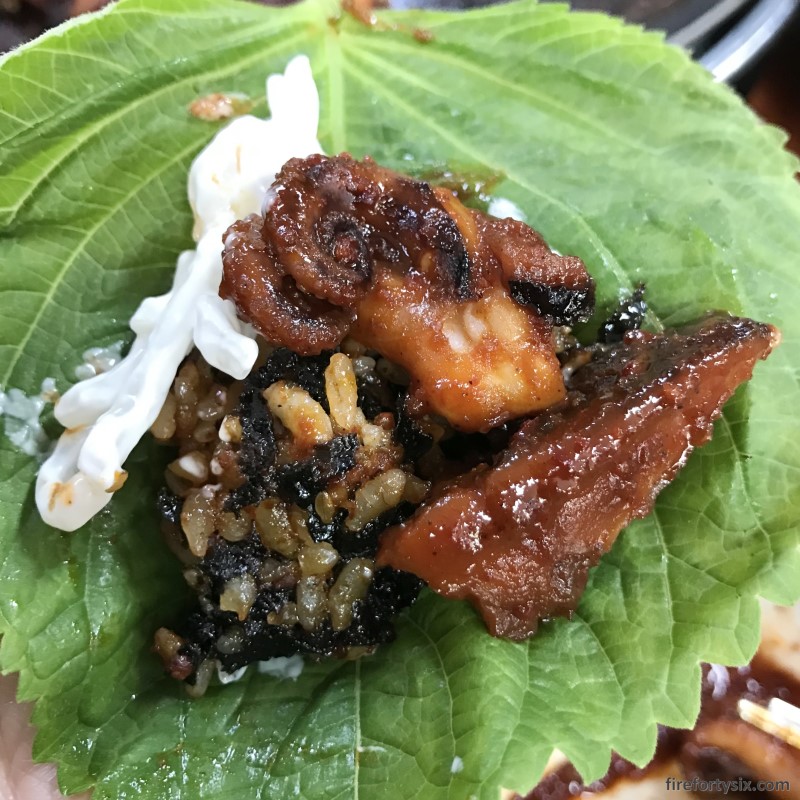
Observe her skilled technique, honed across hundreds, no, thousands, of times she’s repeated this particular sequence of steps.
It doesn’t look like the jjukkumi have any chance of reversing their tragic fate. They’re just too tasty, especially in the skilled hands of the cooks at Najeongsun Halmae.
We had gone there simply to observe the situation. But unfortunately, we ended up being very much part of the problem.
